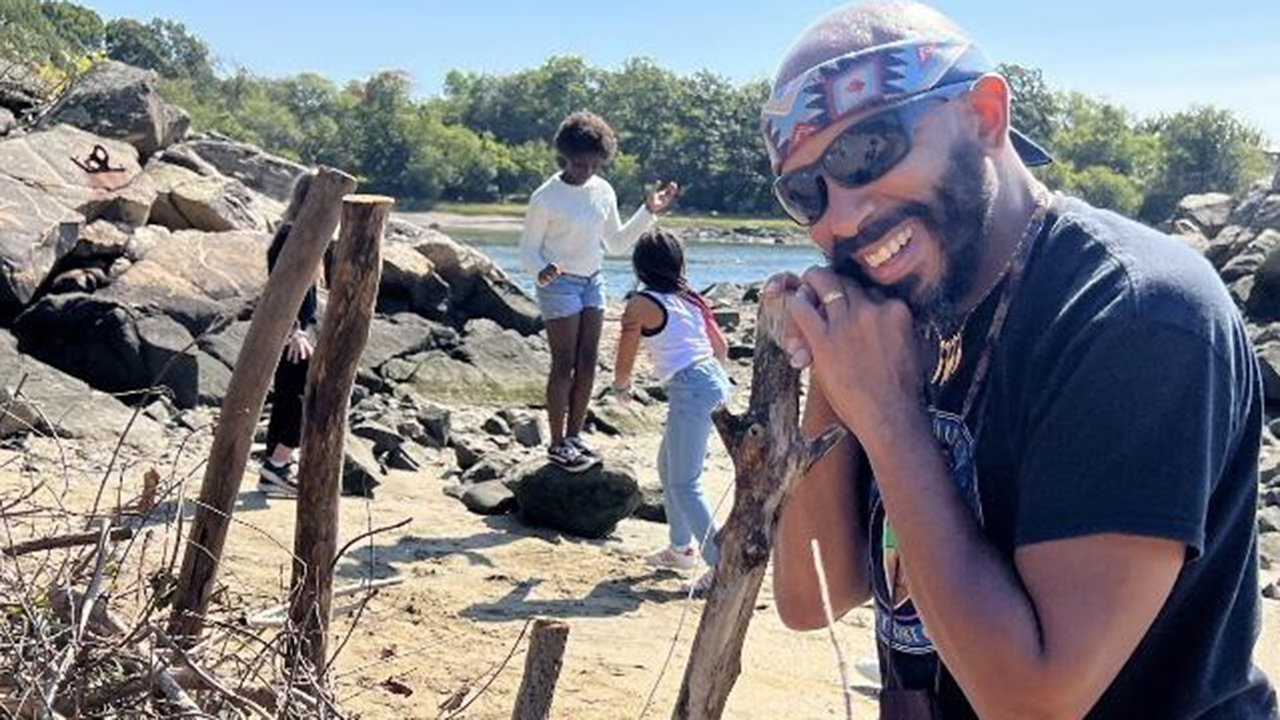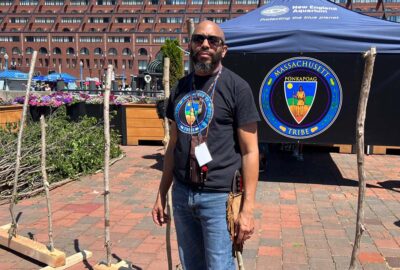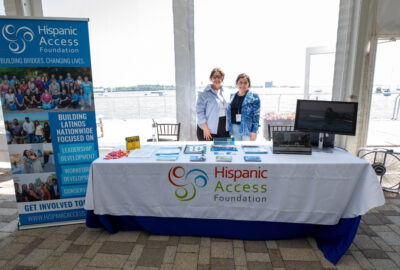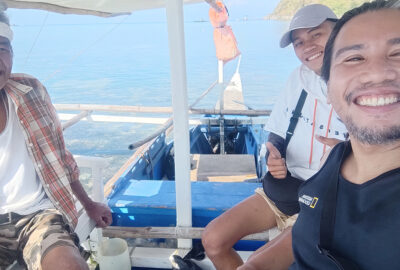The Indigenous History of Boston Harbor
A Q&A with Thomas Green of the Massachusett Tribe
By New England Aquarium on Monday, April 22, 2024

Thomas Green, a member of the Massachusett tribe at Ponkapoag, is an artist and educator who highlights Indigenous history and cultural practices. That work includes building fish weirs, structures traditionally used by Indigenous people for fishing in our local waterways. These efforts serve as a reminder of how ancestral knowledge and practices have been maintained in spite of the injustices Indigenous people have faced.
Boston Harbor and the downtown waterfront, where the Aquarium now resides, are the ancestral homelands of the Neponset band of Massachusett, who gathered at the praying town of Ponkapoag. Here, Thomas shares a bit about his work and his knowledge of the Indigenous history of Boston Harbor.

Can you elaborate on any significant cultural or historical events that have shaped the Massachusett tribe’s identity and relationship with the Boston Harbor area?
Before the smallpox epidemic (1616-1619) that decimated up to 90% of the Massachusett Confederation, we were the most predominant peoples in what is now the Commonwealth of Massachusetts.
Boston Harbor was once the heart of the Massachusett Sachemship. The two leading bands of Massachusett—the Neponset and Pawtucket Sachems, all had summer seats around the harbor. Lesser/petty Sachems from Cape Ann to Cape Cod would have made pilgrimages to sit in council with these Indigenous leaders at least once a year or whenever called upon.
In 1620, English Puritans arrived to colonize our ancestral lands. Between 1620 and 1640, the number of English grew to outnumber the plague-decimated peoples of the Massachusett Confederation. By 1640, the English had effectively cut off the Indigenous leaders from their seats of leadership and resources on the harbor. This appropriation denied the Indigenous Massachusett access to their fertile planting fields, tidal flats, marshes, harbor islands, and ocean, which had provided an abundance of resources on which the Indigenous Massachusett people had sustainably thrived for millennia. We were removed to our wintering grounds at Ponkapoag and coerced into Christianity and the English way of life.
What is your role in the Massachusett tribe today?
I have a traditional leadership role as a Tribal Council Member. I am also the Chairman of the tribe’s History Preservation Committee.
In what ways do you hope to see Indigenous representation and acknowledgment grow within Boston’s public spaces and institutions, particularly along the waterfront?
I hope to see an increase in general knowledge and acknowledgment of Indigenous past and current presence through greater dissemination of accurate Indigenous history via the original Indigenous inhabitants. Plus, official and mutually beneficial relationships with the city, the communities within, and businesses that support local economic growth for the original Indigenous inhabitants, as well as collaboration between local Indigenous and educational institutions within their ancestral homelands.
Can you talk about the practice of building fish weirs? What were they traditionally used for, and why are these structures significant?

Fish weirs have been constructed by the Indigenous Massachusett people since time immemorial. Beginning in the early spring, Indigenous Massachusett would begin to migrate to the shores. The women would rebuild their wetu (summer home), prepare the planting fields to be sewn, and erect fish weirs along the shore to corral fish.
Once harvested, the fish would be eaten and salted and/or smoked to preserve for later. Fish heads and processed carcasses were interred into the planting fields to feed the soil, which in turn fed the people. Today, members of the Massachusett tribe continue the tradition of building fish weirs to honor the efforts their ancestors made just to survive.
Where in the state have you made fish weirs with the community? How did this practice come about?
The Massachusett creating fish weirs as an act of cultural reclamation began in the early 90s. Local Boston artist Ross Miller, in collaboration with our lead Sachem Gill (Feather on the moon) Solomon and Tribal Members, began erecting mock fish weirs on Boston Common and continue this tradition annually.
As one of the Tribal Members who learned this ancient practice of collecting resources passively from the waters through these events, I bring this act of cultural reclamation to many communities along the coast of our ancestral homeland. This tradition is shared with the communities in which the Massachusett ancestors built these fish weirs to remind those communities of the history and current presence of the first peoples who originally inhabited those places. In the past six years, we have erected fish weirs in communities both north and south of Boston. I am currently on course to erect at least three fish weirs within the city throughout the year.

When you’re out in the community building fish weirs or participating in other traditional activities, what’s the significance of that? What do you hope people take away from it?
The significance is honoring the ingenuity my ancestors developed over thousands of years to maintain sustainable, reciprocal relationships with their environment. To bring the importance of that sustainability and reciprocation to the non-Indigenous peoples who now dwell amongst us.
How does the Massachusett tribe approach the balancing act between preserving traditional ways of life and adapting to the demands and opportunities of contemporary society?
This is a balancing act that the Indigenous Massachusett have been forced to endure since 1620. Indigenous cultural practices, including speaking in our ancestral tongue, were frowned upon at best and made illegal at worst. Over the last 400 years of endured subjugation, we have learned to use an always-evolving knowledge base to survive and maintain the ways of our ancestors through traditional storytelling to convey collective knowledge to future generations.
How can Indigenous knowledge and stewardship practices inform how communities approach the challenge of climate change?
Working with Indigenous peoples, who have garnered knowledge of how to live sustainably with their environment over millennia, teaches that we are the environment we endeavor to change. Only by changing and adapting ourselves can we affect what is around us in any meaningful way. We are the Indigenous peoples from whom the colony, province, and Commonwealth took the name Massachusett.




